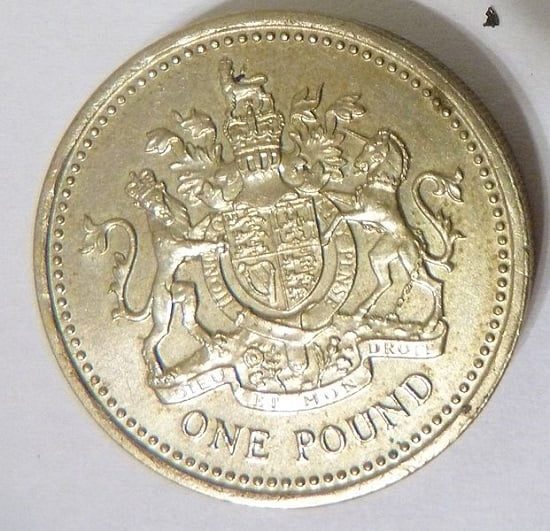What Does ‘Decus et Tutamen’ Mean When Used on Gold Coins?
05/03/2021Daniel Fisher
Free & fully insured UK Delivery. Learn more
Secure & flexible payments. Learn more

Buyback Guarantee Learn more
Numismatics is the field of study related to coinage. Researchers often study the origins of a particular design and may even delve into the history of a particular coin. When we look at the designs of coins, including our very own one pound coin from 1983 or 1996, an inscription with the words “Decus et Tutamen” appears engraved on the side of the coin. This is a very interesting observation. The inscription does not appear on the obverse or reverse of the coin. It is engraved on the side, which is probably why many people miss seeing it completely. But what is it? What does it mean?
The inscription “Decus et Tutamen” simply means – an ornament and a safeguard. Another interpretation is ‘glory and defence’. So, the inscription was created to enhance the design of the coin and protect it. But protect the coin against what?

The one pound coin from 1983 carries the inscription on the side
This is the term that was used to describe the practice of coin clipping. Coin clipping was a practice that existed particularly in the 17th and 18th centuries, where a small portion of a precious metal coin was simply shaved off and kept aside for profits. This illegal practice meant that these clippings could all be collected and then melted into gold and silver. If a person managed to save up a significant volume of clippings, it simply meant that it could be melted into a sizeable bar or even counterfeit coins. So, the inscription “Decus et Tutamen” was created to protect the coins. If the Clippers were to shave off the coin, the inscription would disappear, and the coin could be rejected as being damaged. Interestingly, the crime of coin clipping was punishable by death at the time. It has been documented that in the year 1690, Thomas and Anne Rogers were tried and convicted for high treason, due to their crime of coin clipping. Both of them received the death penalty.

It was during the reign of King Charles II that the protective inscription was first introduced
Find out the best ways to buy precious metals tax efficiently
The phrase “Decus et Tutamen” was originally coined by the English author, John Evelyn on 10th January 1662, more than 350 years ago. It is reported that this proposal was made by John Evelyn in person to King Charles II. At the time, a new coinage was being designed for the reign of the new King.
Evelyn suggested that this system of protection could be incorporated on the new valuable coins, like the five Guinea gold coin, being minted for the Kings new reign. However, this inscription was discontinued following the death of King Charles II. But it reappeared in later years, during the reigns of different British monarchs and can be found on commemorative coins, which were intended to be valuable. In recent years, the inscription can be found on the milled edge of many British 1 pound coins, popularly known as the “round pound”, which replaced the Bank of England pound note in 1983.
Most scholars agree that John Evelyn may have picked the phrase from a literary work, popularly known as Virgil’s Aeneid, in which the words “Viro Decus et Tutamen in Armis”, can be found. These words have been used within the text to describe a large, armoured breastplate decorated with gold.
Our Portfolio Creator tool will suggest 4 options based on your budget and objectives. Give it a try below.
If you are a coin collector or a numismatist, you could benefit by calling our team of coin experts at Physical Gold. Our team conducts regular research on many valuable coins, including their origins and history. Whether you are looking for gold to build a portfolio or a collection, please call us on (020) 7060 9992 or get in touch with us online. We would be happy to help you out.
Image credits: Wikimedia Commons and Wikimedia Commons
Live Gold Spot Price in Sterling. Gold is one of the densest of all metals. It is a good conductor of heat and electricity. It is also soft and the most malleable and ductile of the elements; an ounce (31.1 grams; gold is weighed in troy ounces) can be beaten out to 187 square feet (about 17 square metres) in extremely thin sheets called gold leaf.
Live Silver Spot Price in Sterling. Silver (Ag), chemical element, a white lustrous metal valued for its decorative beauty and electrical conductivity. Silver is located in Group 11 (Ib) and Period 5 of the periodic table, between copper (Period 4) and gold (Period 6), and its physical and chemical properties are intermediate between those two metals.